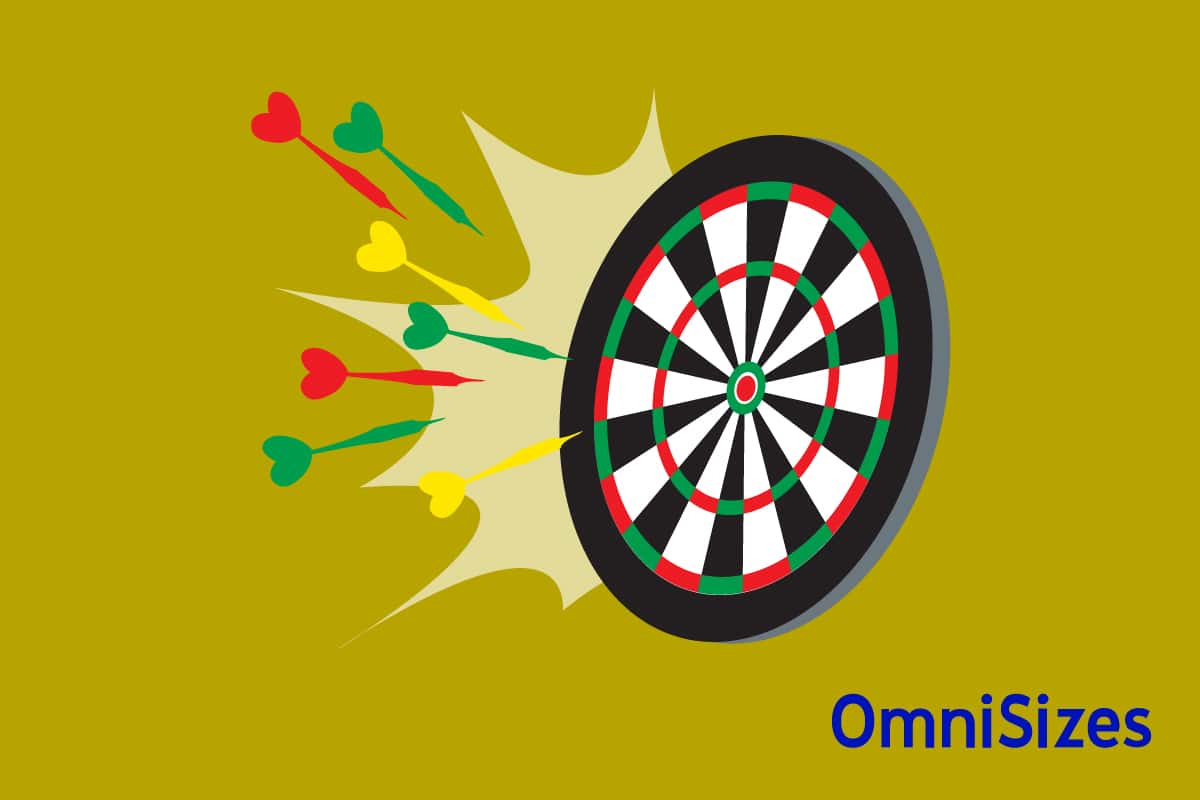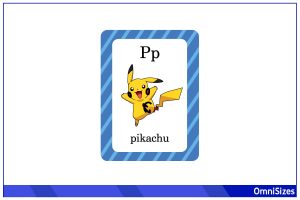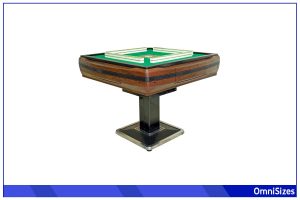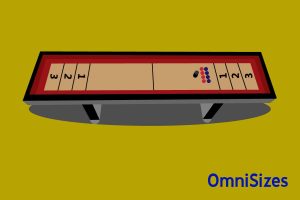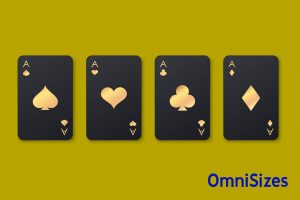There’s nothing more enjoyable than throwing sharp-tipped darts with your tipsy friends in a dark room. This, of course, is assuming you can hit the dartboard with your darts, which is why knowing dartboard sizes is incredibly important. The right size can impact the difficulty level and style of play.
The regulation dartboard diameter is 17.75 inches (45.1 cm). Other vital measurements include the bullseye diameter at 0.5 inches (1.27 cm) and the double and triple rings, each 0.315 inches (0.8 cm) wide.
This guide will explain the basics of dartboards and their sizes, as well as how to set up a dartboard properly.
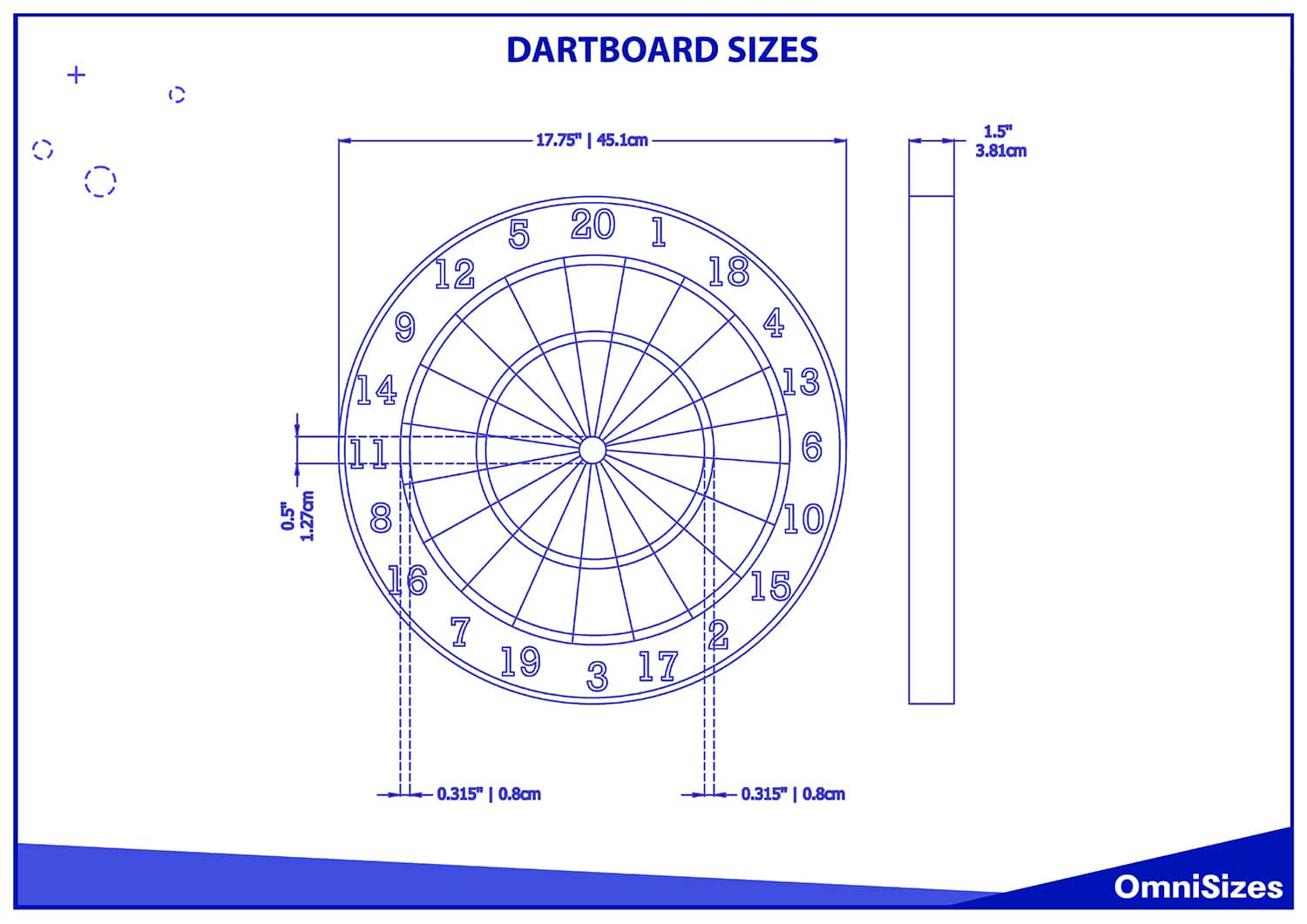
Parts of a Dartboard
A dartboard is a circular target designed with various sections. Each section plays an important role in the overall experience, especially if you’re playing to win and not to merely hit the board.
1. The Bullseye
The bullseye is the center of the dartboard, often in a vibrant red or green color. It’s divided into two parts: the inner bullseye (or double bull) and the outer bullseye (or single bull). The inner bullseye is the game’s highest scoring area, usually worth 50 points, while the outer ring scores 25 points.
2. The Triple and Double Rings
Located on the outer part of the board, the triple and double rings are narrow bands that multiply the point value of the section they encircle. The triple ring, located towards the middle of the board, triples the point value of the segment it surrounds. The double ring, on the board’s outer edge, doubles the point value. These rings are critical for high-scoring strategies in darts.
3. Number Ring
The number ring sits on the outermost part of the dartboard and displays numbers 1 through 20. These numbers correspond to the scoring sections of the board. The arrangement of these numbers is designed to penalize inaccuracies and reward skillful play.
Dartboard Sizes
You can find dartboards of various sizes and for various purposes.
1. Regulation Dartboard Size
Regulation dartboards, used in professional tournaments and leagues, have a diameter of 17.75 inches (45.1 cm). The distance from the bullseye to the triple and double rings is 4.21 and 6.69 inches (10.7 and 17 cm) respectively.
Best Regulation Dartboard: Hey! Play! Paper Wound Dart Board
2. Bristle Dartboard Dimensions
Bristle dartboards, typically made of sisal fibers, are commonly used in both professional and casual settings. Their dimensions mirror regulation dartboards, with a diameter of 17.75 inches. The thickness of these boards can vary but usually ranges around 1.5 inches, providing enough depth for darts to stick effectively.
Best Bristle Dartboard: Winmau Blade 5 and Blade 6 Bristle Dartboards
3. Electronic Dartboard Dimensions
Electronic dartboards, popular in recreational settings, offer automatic scoring and interactive features. They come in a variety of sizes, with many models come with 15.5-inch (39.37 cm) surfaces. However, smaller versions exist.
Best Electronic Dartboard: Arachnid Cricket Pro 800 Electronic Dartboard 15.5 in.
4. Children’s Dartboards
Dartboards for children are typically smaller and made of safer materials like magnetic or paper options. Sizes can range widely, from 12 to 30 inches in diameter, allowing for easier play and safer interaction for younger users.
Dartboard Accessories
While the dartboard is important, the accessories associated with this classic game require a mention.
1. Darts
Darts are the primary tool in the game and come in various sizes and weights. A standard dart is typically between 5.9 and 6.7 inches (15 to 17 cm) in length, with a weight ranging from 18 to 26 grams. Darts consist of four main parts: the tip, barrel, shaft, and flight.
2. Dartboard Lighting
Dartboard lighting systems, such as LED rings or overhead lights, illuminate the board evenly, reducing shadows and glare. These systems are designed to fit around standard-sized dartboards and can be adjusted for brightness and angle.
3. Surrounds and Cabinets
Surrounds and cabinets protect the wall from stray darts and add a decorative element to the dart setup. Surrounds are foam or rubber rings that fit around the dartboard, while cabinets are wooden or metal enclosures that house the board. Cabinets often include scoreboards, dart storage, and can vary in size to fit various dartboard models.
4. Dart Mats
Dart mats protect flooring and mark the official throwing line, or oche. Made from durable materials like rubber, these mats typically measure around 10 feet in length. Some mats feature printed measurements for easy setup and can be rolled up for storage.
Installation and Space Requirements
If you’re planning on setting up your own dartboard station, follow these tips that adhere to the Darts Regulation Authority (DRA) rulebook.
1. Mounting the Dartboard
To mount a dartboard, you’ll need a sturdy wall. Traditional bristle boards are often hung on a wall using a mounting bracket, which is included with the board. Ensure the wall material can support the weight of the dartboard.
2. Height Specifications
The official height for hanging a dartboard is from the floor to the center of the bullseye, which should be 5 feet 8 inches (173 cm). This height is standardized for consistency in play, whether in a home setting or a professional tournament.
3. Throwing Distance
The throwing line, also known as the oche, should be 7 feet 9.25 inches (237 cm) from the face of the dartboard. This distance is crucial for a regulation play setup. Ensure you have enough space to measure this distance out in your chosen location.
4. Space for Scoring and Storage
Allocate space for a scoreboard and storage of darts and accessories. This doesn’t need to be extensive but should be conveniently accessible during gameplay.
